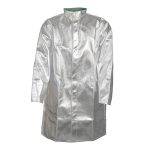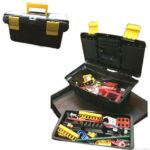Your list is empty, add products to the list to send a request
What Are the Three Types of Smoke Detectors?

07
May
At Firesupplies, established by South Fire Systems Pvt. Ltd., we are proud to be India’s first dedicated online store for fire safety products. Our mission is to empower building safety professionals, facility managers, and fire safety consultants with high-quality, affordable fire protection solutions—from fire alarms and gas detection systems to emergency lighting and personal protective gear.
In this guide, we’ll explore the three main types of smoke detectors: ionization, photoelectric, and dual-sensor. Understanding their differences is crucial for selecting the right device for your facility or project.
Ionization Smoke Detectors: Best for Fast-Flaming Fires
Ionization smoke detectors are designed to detect fast-flaming fires, such as those caused by paper or flammable liquids. These detectors contain a small amount of radioactive material between two electrically charged plates, which ionizes the air and creates a current. When smoke enters the chamber, it disrupts this current, triggering the alarm
Key Features:
- Highly sensitive to small smoke particles from flaming fires
- Typically more affordable than other types
- May be prone to false alarms from cooking or steam
Best suited for areas like kitchens or garages where fast-flaming fires are more likely.
Photoelectric Smoke Detectors: Ideal for Smoldering Fires
Photoelectric smoke detectors excel at detecting slow, smoldering fires, such as those caused by cigarettes or electrical faults. They use a light source and a sensor; when smoke enters the chamber, it scatters the light, which is detected by the sensor, triggering the alarm.
Key Features:
- More responsive to larger smoke particles from smoldering fires
- Less prone to false alarms from cooking
- Slightly more expensive than ionization detectors
Ideal for living rooms, bedrooms, and hallways where smoldering fires may occur.
Dual-Sensor Smoke Detectors
Dual-sensor smoke detectors combine both ionization and photoelectric technologies, providing comprehensive detection of both flaming and smoldering fires. This dual approach ensures a faster response to a wider range of fire types.
Key Features:
- Offers the benefits of both ionization and photoelectric detectors
- Provides broader fire detection coverage
- Generally more expensive than single-sensor models
Recommended for comprehensive protection in various areas of a building.
Addressable Smoke Detectors: Advanced Monitoring for Large Facilities
Addressable smoke detectors are part of a larger fire alarm system where each detector has a unique address. This setup allows for precise identification of the location of a fire within a building, which is crucial for large facilities.
Key Features:
- Each detector has a unique address for pinpointing fire location
- Integrated into a central fire alarm system
- Suitable for large commercial or industrial buildings
Ideal for large facilities where precise fire location identification is critical.
Choosing the Right Smoke Detector for Your Needs
When selecting a smoke detector, consider the specific needs of the area:
- Ionization Detectors: Best for detecting fast-flaming fires; suitable for kitchens and garages.
- Photoelectric Detectors: Ideal for detecting smoldering fires; suitable for living areas and bedrooms.
- Dual-Sensor Detectors: Provide comprehensive protection; suitable for various areas.
- Addressable Detectors: Essential for large facilities requiring precise fire location monitoring.
Ensure that the chosen detector complies with local fire safety regulations and standards.
Frequently Asked Questions (FAQs)
1. What is smoke testing?
A: Smoke testing, in the context of software development, refers to a preliminary testing process to check the basic functionality of an application. It’s a quick test to ensure that the most crucial functions work correctly before proceeding to more in-depth testing.
2. What cable is used for smoke detectors?
A: Mineral-insulated copper-clad cable (MICC), also known as pyro cable, is commonly used for smoke detectors. It’s fire-resistant and suitable for critical fire protection applications, ensuring that the alarm system remains operational during a fire.
3. Do smoke detectors need 3 wires?
A: Yes, hardwired smoke detectors typically require three wires:
1. Hot (Live) Wire: Provides power to the detector.
2. Neutral Wire: Completes the electrical circuit.
3. Interconnect Wire: Allows multiple detectors to communicate; when one detects smoke, all connected alarms sound.
This setup ensures synchronized alerts throughout a building.
Enhance Your Fire Safety Measures Today
Understanding the different types of smoke detectors is crucial for implementing effective fire safety measures. At Firesupplies, we offer a wide range of high-quality smoke detectors suitable for various applications.
Explore our selection and find the right solution for your needs:
Edward SIGA-OSD SIGA-SB Addressable Smoke Detector with Base
Ensure the safety of your building and its occupants with reliable fire detection systems from Firesupplies.



























